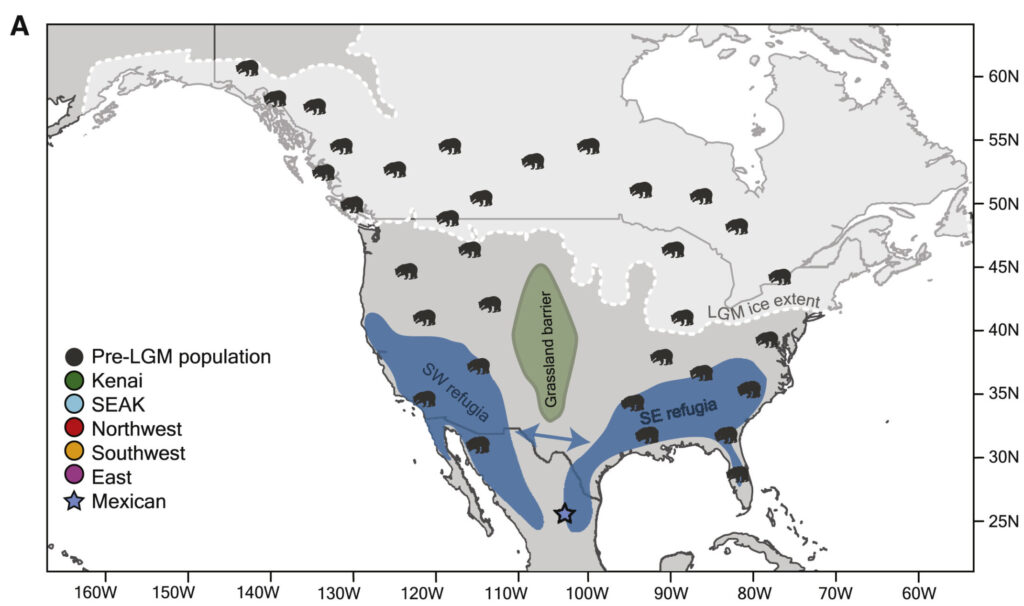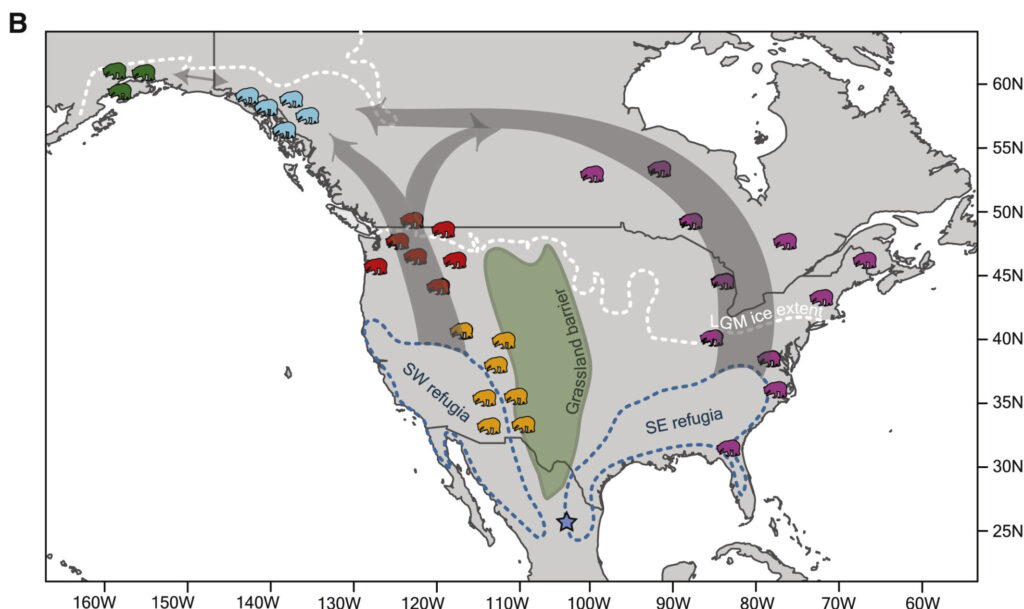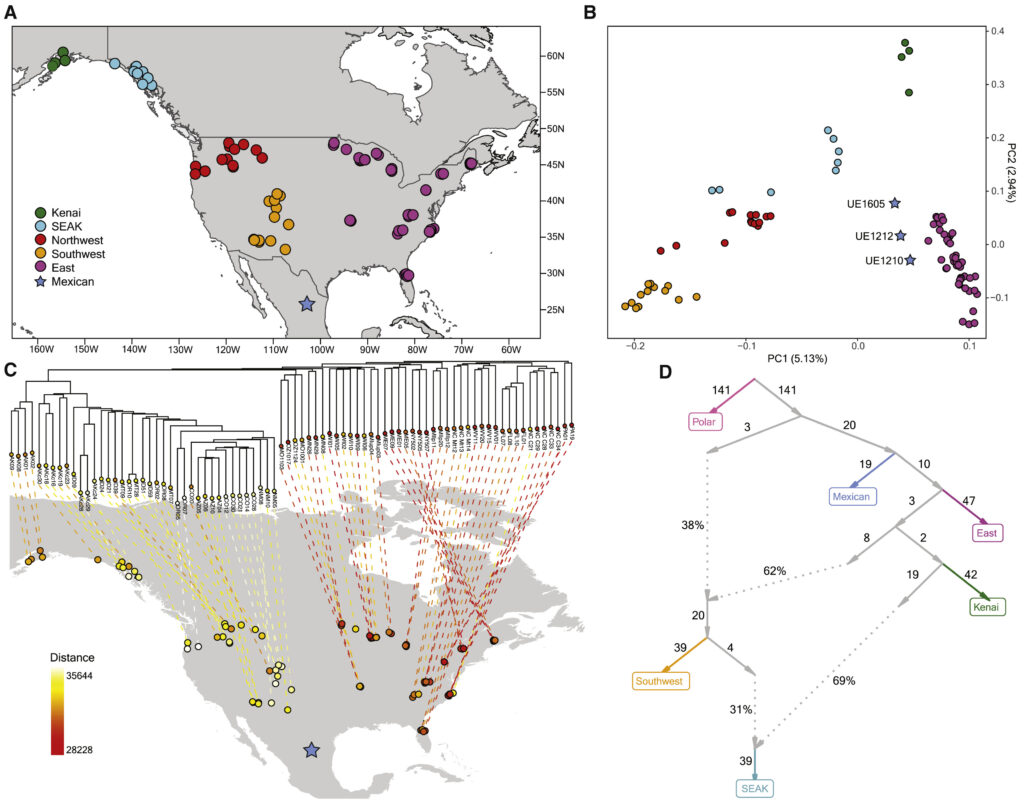Genetic analysis can provide incredible and often counterintuitive discoveries about the relationships between and within species and their unique ancestral histories. A study was published 3 years ago which explored the genomes of three Pleistocene black bear genomes found in eDNA in central Mexico and compared them to genomes of black bears in the eastern, southwestern, and northwestern contiguous US but also in southeastern and south-central Alaska. It revealed that the Mexican bears were closely related to black bears in eastern North America, but also, shockingly, to bears in south-central Alaska(Kenai). By contrast, a short-faced bear(Arctodus simus) genome found in eDNA from the same cave in Mexico was found to be highly diverged from that of short-faced bears from Yukon.
During the Late Pleistocene, glaciers in North America gradually increased in size until reaching their maximum extent during the Last Glacial Maximum about 20,000 years ago. Black bears were increasingly pushed further and further south as the glaciers advanced until they were restricted to two distinct refugia in the southwestern and southeastern United States, separated by a grassland barrier. Meanwhile, the southwestern fringe of the southeastern refugium is where the Mexican black bears genomes were retrieved, which explains their affinity for bears in eastern North America.

But what explains the Mexican and eastern US bears’ affinity for certain Alaskan bears(specifically from Kenai) when Alaska is in the northwest fringe of the continent? The authors speculate about the similarity and the substructure(internal variation) of the eastern clade in general. It is a bit confusing but I’ll try my best to explain:
First, Alaskan bears might have already been connected to bears in eastern North America by an east-west boreal forest belt in Canada during the Late Pleistocene, and then retreated southeastwards into the refugium in the southeastern US. As they settled into the refuge, they maintained the geography-based genetic substructure. Once the ice sheet melted, the bears expanded north again, having preserved their unique genetic signatures. Alternatively, the original northern bears were either extirpated or became mixed in the refugium and the present substructure is just from the bears from that area expanding rather than anything more ancient.

Meanwhile, Alaskan black bears from southeastern Alaska seem to have admixture from black bears pushing north from the Pacific northwest, creating a population intermediate between Kenai bears and Pacific northwest ones. Pacific northwest bears, in turn, appear to themselves have some eastern admixture and are intermediate between the eastern clade and southwestern American bears.

In stark contrast, the short-faced bear(Arctodus simus) sample the authors also sequenced turned out to be highly diverged from bears in the Yukon(near Alaska) as would be expected given such large geographic distances.
The study highlights importance of eDNA in providing genetic insights but also reveals how phylogenetic relationships are not always intuitive and do not necessarily track geographic distances.
References
Pedersen, M. W., Sanctis, B. D., Saremi, N. F., Sikora, M., Puckett, E. E., Gu, Z., Moon, K. L., Kapp, J. D., Vinner, L., Vardanyan, Z., Ardelean, C. F., Arroyo-Cabrales, J., Cahill, J. A., Heintzman, P. D., Zazula, G., MacPhee, R. D. E., Shapiro, B., Durbin, R., & Willerslev, E. (2021). Environmental genomics of Late Pleistocene black bears and giant short-faced bears. Current Biology, 31(12), 2728-2736.e8. https://doi.org/10.1016/j.cub.2021.04.027